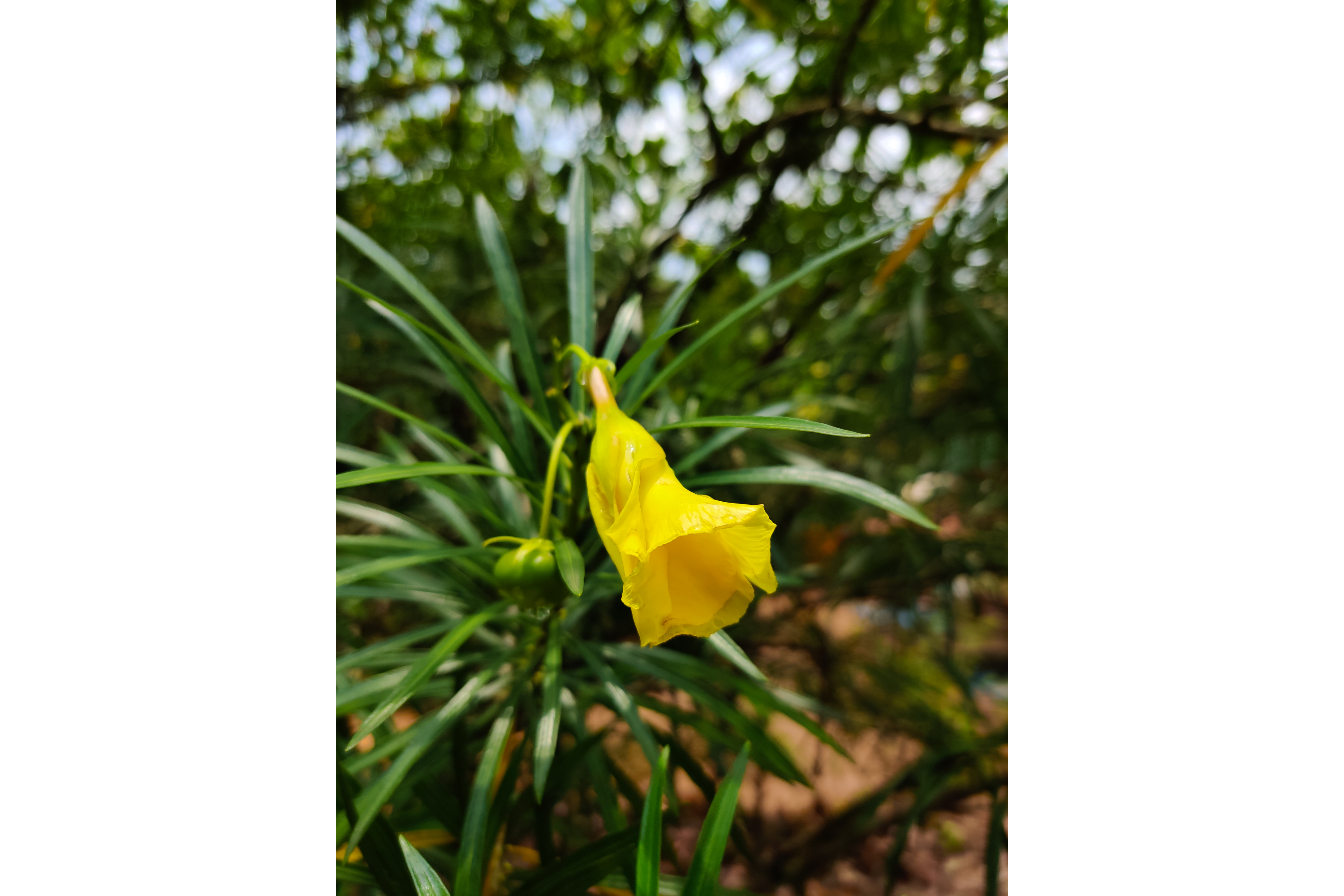Thevetia
(Cascabela thevetioides)

Description
Cascabela thevetia (syn: Thevetia peruviana) is a poisonous plant native throughout Mexico and in Central America, and cultivated widely as an ornamental. It is a relative of Nerium oleander, giving it a common name yellow oleander, and is also called lucky nut in the West Indies. Cascabela thevetia is an evergreen tropical shrub or small tree. Its leaves are willow-like, linear-lanceolate, and glossy green in color. They are covered in waxy coating to reduce water loss (typical of oleanders). Its stem is green turning silver/gray as it ages. Flowers bloom from summer to fall. The long funnel-shaped sometimes-fragrant yellow (less commonly apricot, sometimes white) flowers are in few-flowered terminal clusters. Its fruit is deep red-black in color encasing a large seed that bears some resemblance to a 'Chinese lucky nut. Cascabela thevetia is commonly known as Kaneir or Kaner in Hindi language in India. It is effectively drought resistant and tolerant to high temperatures, hence found in various states of India like Andhra, Bihar, Delhi, Gujarat, Madhya Pradesh, Telangana, West Bengal, Rajasthan, Tamil Nadu, Uttar Pradesh, Odisha and Assam where semi arid climate is prevalent.
Taxonomic tree:







